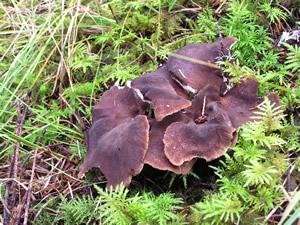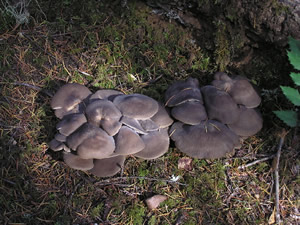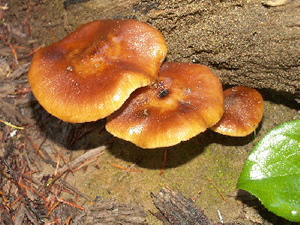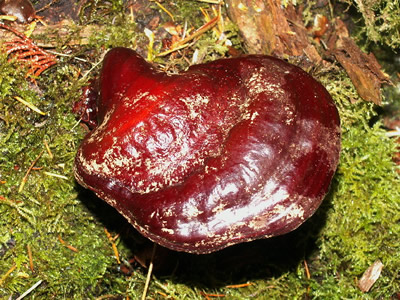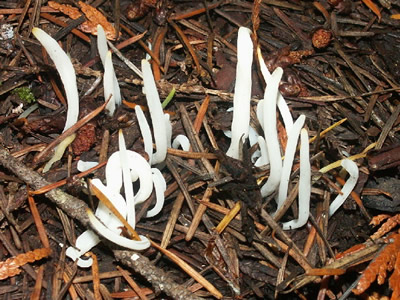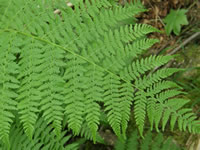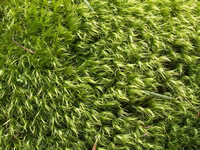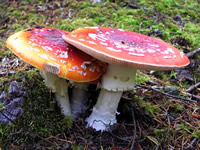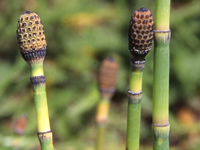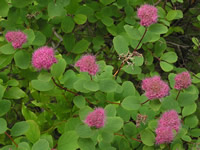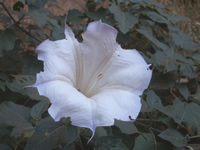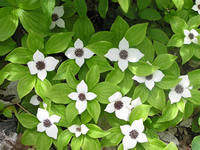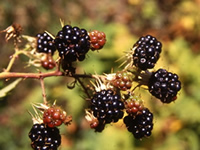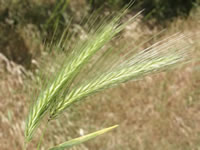Besides the shapes and the sizes of mushrooms, another factor is their growing habits. Some grow singularly in isolated places (right) while others tend to favour the closeness of living in clumps and create large communities (below left).
One of the most common is the spreading group of fungi that can form huge patches as they struggle for the light and their place in the world (below right). |
|
| |
Questionable Stropharia, Stropharia ambigua |
| |
|
|
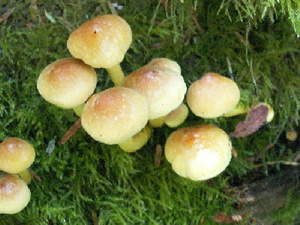 |
Bitter Polypore, Jahnoporus hirtus |
Sulfur Tuft, Naematoloma fasciculare |
| |
|
|
|
Toothed Jelly Fungus,
Pseudohydnum gelatinosum |
Fried Chicken Mushroom,
Lyophyllum decastes group |
| |
|
|
You’ll find fungi in open areas among mosses (above left) or in the shade (above right), where certain species do extremely well.
Others lie in the protection of fallen trees (left). |
Honey Mushroom, Armillaria mellea group |
|



